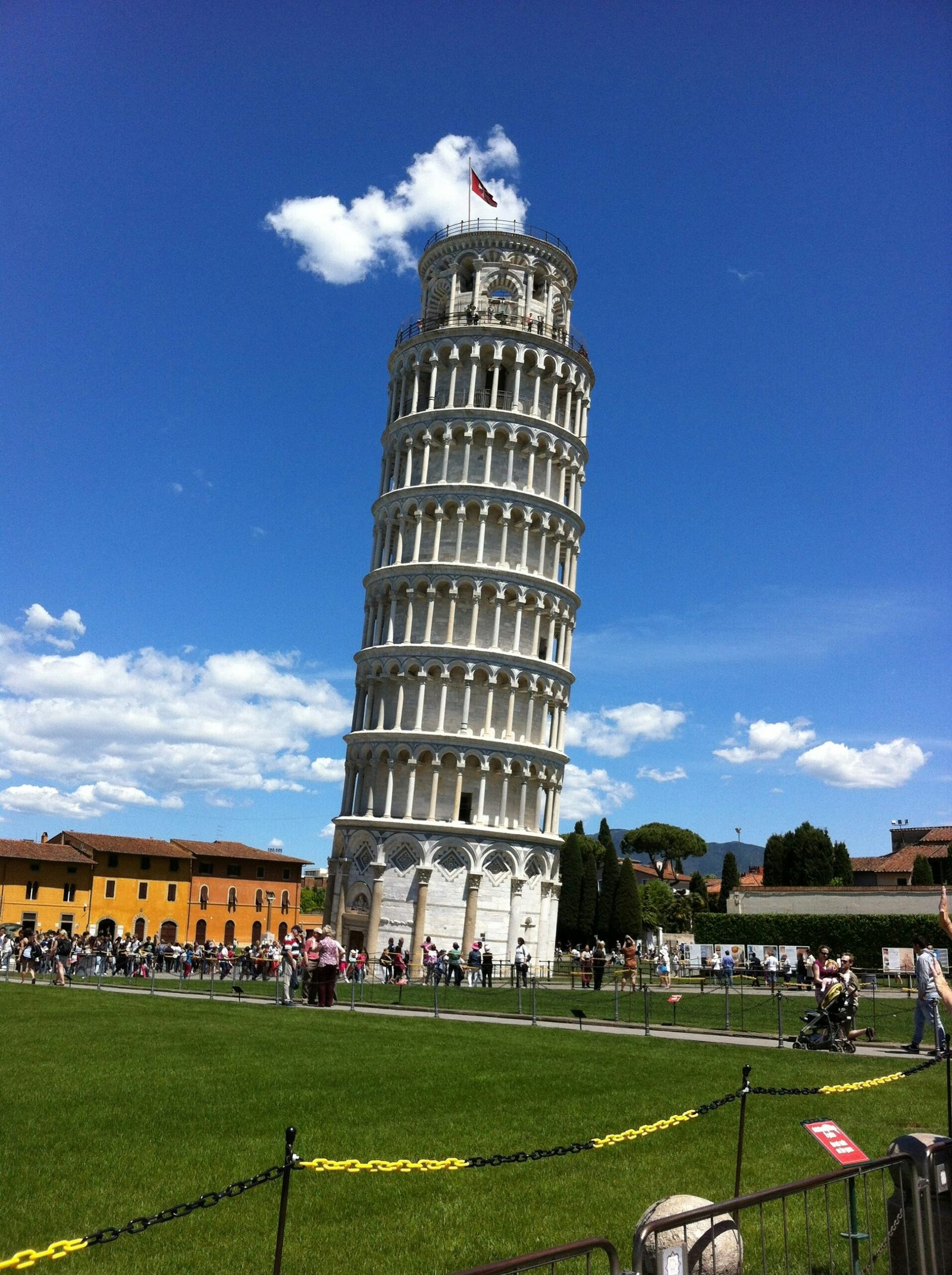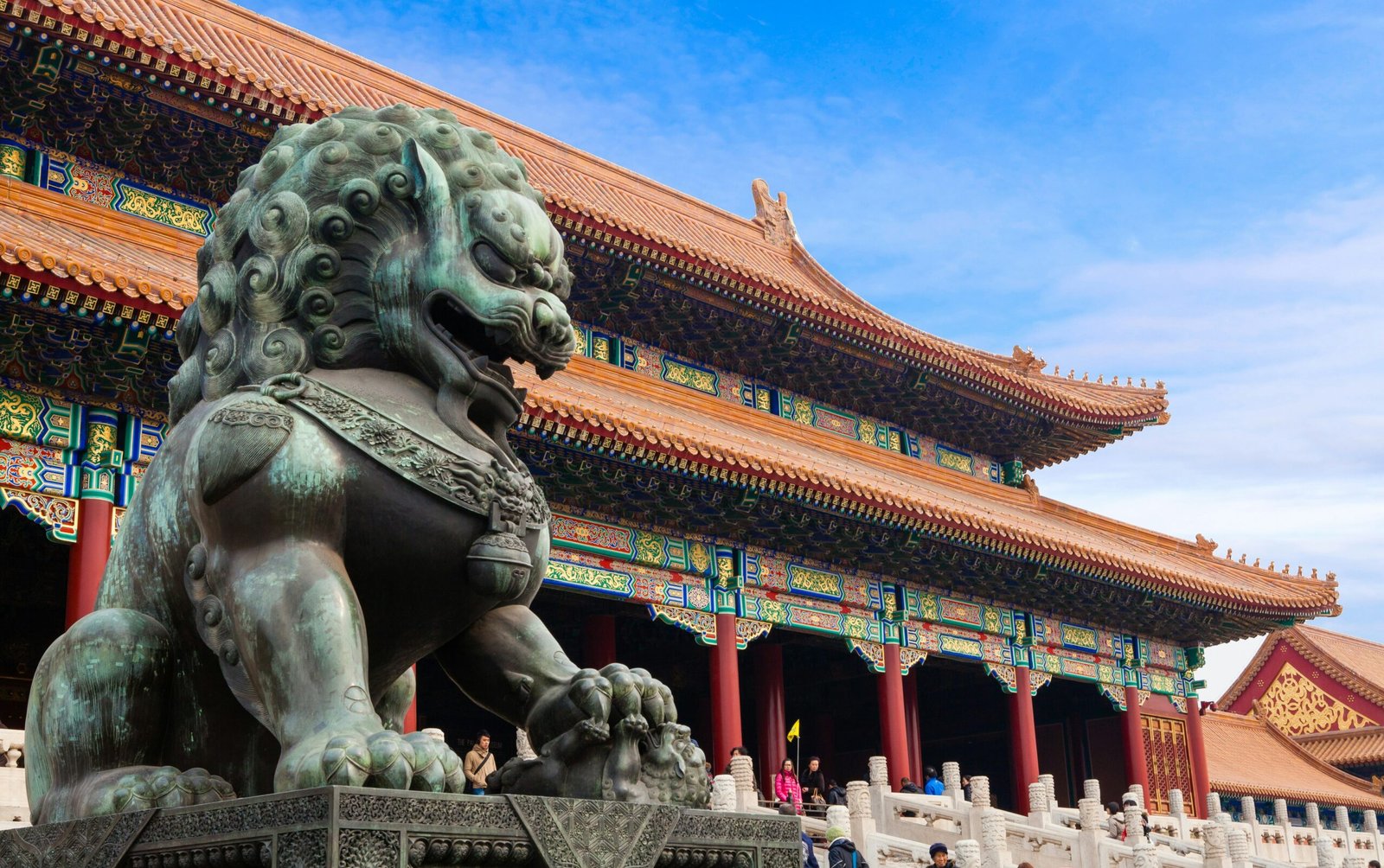
Construction of the Leaning Tower of Pisa began in 1173 and took over 200 years to complete. The tower was originally intended to be a bell tower for the nearby Pisa Cathedral, but it quickly became apparent that something was amiss. As the tower reached the third floor, it started to lean to one side due to the soft ground it was built on.
Despite the unintended tilt, construction continued, with architects and engineers attempting to correct the lean by adjusting the height and design of each subsequent floor. However, their efforts were in vain, as the tower continued to lean further and further as construction progressed.
Over the centuries, various attempts were made to stabilize the tower and prevent it from collapsing. In the 20th century, extensive restoration work was done to reinforce the tower and reduce its tilt. This involved removing soil from the raised side of the tower and adding counterweights to balance the weight distribution.
Today, the Leaning Tower of Pisa stands at a height of 55.86 meters (183.27 feet) on its highest side and leans at an angle of approximately 3.99 degrees. Despite its tilt, the tower has become an iconic symbol of Pisa and a testament to human perseverance and ingenuity.
Visitors from around the world flock to Pisa to marvel at this architectural wonder. The tower’s unique lean has made it a popular subject for photographs, with tourists striking creative poses to create the illusion of holding up or pushing over the tower.
Aside from its visual appeal, the Leaning Tower of Pisa also holds historical and cultural significance. It serves as a reminder of Pisa’s rich history as a maritime republic and its contribution to art and architecture during the medieval period.
While the tower’s lean may have initially been seen as a flaw, it has ultimately become its defining feature. The Leaning Tower of Pisa stands as a testament to the resilience of human creativity and the ability to turn a mistake into something extraordinary.
A Brief History
The construction of the Leaning Tower of Pisa began in 1173 and took over 200 years to complete. It was originally intended to be a bell tower for the nearby Pisa Cathedral. However, even during its early stages of construction, it started to lean due to the soft ground on which it was built.
Over the years, several attempts were made to correct the tilt, but they only resulted in further tilting. Despite this, the tower remained standing and became a symbol of resilience for the city of Pisa.
During the construction of the tower, the architects and engineers faced numerous challenges. The soft clay and sand that made up the foundation of the site caused the tower to sink unevenly, leading to its characteristic tilt. As the tower continued to rise, the weight of the structure caused the ground to compress, exacerbating the lean. To compensate for this, the builders tried to adjust the angle of the subsequent floors, but their efforts were in vain.
As the construction progressed, it became apparent that the tower would never stand upright. However, the builders decided to continue with the construction, hoping that the tower’s unique lean would somehow become its defining feature. This decision proved to be a wise one, as the Leaning Tower of Pisa has become one of the most recognizable landmarks in the world.
Throughout its history, the tower has faced numerous challenges, including wars, earthquakes, and even bombings during World War II. Despite these adversities, the tower has managed to survive and stand tall, captivating visitors from around the globe with its remarkable lean.
Today, the Leaning Tower of Pisa attracts millions of tourists each year, who come to marvel at its architectural wonder and take the iconic pictures of themselves “holding up” the tower. The tower’s lean has become a symbol of human ingenuity and perseverance, reminding us that even in the face of adversity, we can find strength and create something truly extraordinary.
The construction of the Leaning Tower of Pisa was a remarkable feat of engineering and ingenuity. The architects and engineers involved in the project had to overcome the challenges posed by the tower’s tilt and ensure its stability. They employed various techniques to compensate for the uneven settling of the ground beneath the tower.
One of the key strategies used in the construction was the deliberate asymmetry of the upper floors. The architects built each floor with one side taller than the other, gradually adjusting the height as they ascended. By doing so, they effectively counterbalanced the lean and distributed the weight of the tower more evenly. This method allowed the tower to maintain its equilibrium and prevented it from toppling over.
Additionally, the columns and arches of the Leaning Tower of Pisa were designed with a slight curvature. This curvature served a dual purpose. Firstly, it helped to alleviate some of the stress caused by the tower’s tilt, as the curved elements were better able to distribute the load. Secondly, the curved design added an aesthetic appeal to the tower, giving it a unique and graceful appearance.
The architects and engineers also took into account the type of soil on which the tower was built. The tower stands on a mixture of clay, sand, and shells, which is known to be prone to settling and shifting. To mitigate the effects of the unstable ground, they constructed a solid foundation for the tower. The foundation consists of a massive concrete slab, reinforced with iron rings, which helps to distribute the weight of the tower more evenly and minimize the risk of further leaning.
Despite the best efforts of the construction team, the Leaning Tower of Pisa continued to tilt during its construction and even after its completion. Over the years, various attempts have been made to stabilize the tower and prevent it from leaning further. These efforts included the installation of counterweights and the removal of soil from the higher side of the tower. Today, the tower is carefully monitored and measures are in place to ensure its preservation for future generations to admire.
The Leaning Tower of Pisa stands as a testament to human perseverance and innovation. Its unique architectural design and the engineering techniques employed to counterbalance its lean have made it an iconic landmark known worldwide. Visitors from all over the world flock to Pisa to witness this marvel of human achievement and marvel at its beauty and defiance of gravity.
Moreover, the Leaning Tower of Pisa has had a significant impact on the local economy. The influx of tourists has brought prosperity to the city of Pisa, providing employment opportunities and boosting the tourism industry. The tower’s popularity has led to the development of infrastructure and services to cater to the needs of visitors, such as hotels, restaurants, and souvenir shops.
Furthermore, the tower’s lean has sparked scientific curiosity and research. Engineers and architects have studied the tower extensively to understand its structural integrity and find ways to prevent further leaning. This research has not only contributed to the field of architecture but has also inspired innovative solutions to engineering challenges in other structures.
On a cultural level, the Leaning Tower of Pisa has made its way into popular culture. It has been featured in numerous movies, books, and works of art, further cementing its status as a global icon. Its image can be found on postcards, t-shirts, and various other merchandise, serving as a symbol of Italy’s charm and beauty.
Additionally, the tower has become a symbol of resilience and perseverance. Despite its initial failure, the tower has become a beloved landmark that continues to captivate and inspire people from all walks of life. It serves as a reminder that even in the face of adversity, human creativity and determination can triumph.
In conclusion, the Leaning Tower of Pisa is more than just a tilted building; it is a symbol of Italy’s rich history, architectural brilliance, and cultural heritage. Its significance and cultural impact extend beyond its physical appearance, making it a cherished and celebrated monument that continues to leave a lasting impression on all who visit.
Visiting the Leaning Tower of Pisa is a truly unique experience that should not be missed. As you approach the tower, its iconic lean becomes more and more apparent, creating a sense of awe and curiosity. The tower stands at a height of over 55 meters and has been leaning for centuries, making it a fascinating architectural marvel.
Once you enter the tower, you will notice the intricate design and craftsmanship that went into its construction. The interior is adorned with beautiful marble and intricate carvings, showcasing the skill of the craftsmen who worked on it. As you make your way up the tower, you can feel the slight tilt under your feet, adding to the excitement and anticipation.
Reaching the top of the tower is a rewarding experience. From the viewing platform, you can enjoy breathtaking panoramic views of the city of Pisa and its surroundings. On a clear day, you can see the rolling hills of Tuscany in the distance, creating a picturesque backdrop for your visit.
After descending from the tower, take the time to explore the Piazza dei Miracoli, also known as the Square of Miracles. This UNESCO World Heritage Site is home to not only the Leaning Tower but also the Pisa Cathedral and the Baptistery. Each of these structures is a masterpiece in its own right, with unique architectural styles and historical significance.
The Pisa Cathedral, also known as the Cathedral of Santa Maria Assunta, is a stunning example of Romanesque architecture. Its intricate facade, adorned with columns, arches, and sculptures, is a sight to behold. Inside, you can admire the beautiful mosaics, frescoes, and the famous pulpit by Giovanni Pisano.
The Baptistery, dedicated to St. John the Baptist, is another remarkable structure in the square. Its circular shape and elegant design make it a true gem of Pisan Romanesque architecture. Step inside to marvel at the acoustics, as the dome creates a unique echo that is often demonstrated by the attendants.
As you explore the Piazza dei Miracoli, you will also come across the Camposanto Monumentale, a monumental cemetery. This sacred space is filled with beautiful frescoes and sculptures, providing a peaceful and reflective atmosphere.
Visiting the Leaning Tower of Pisa and its surrounding attractions is an experience that combines history, art, and architecture. It is a testament to human ingenuity and the enduring allure of this iconic structure. So, make sure to plan your visit in advance, soak in the beauty of the tower, and immerse yourself in the rich history of Pisa.



